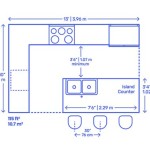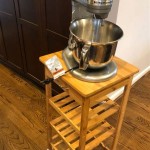Pull Out Faucet Kitchen Sink: A Comprehensive Guide
The pull out faucet kitchen sink has become a ubiquitous fixture in modern kitchens, offering enhanced functionality and versatility compared to traditional faucets. This type of faucet, characterized by its retractable spray head connected to a flexible hose, provides users with extended reach and maneuverability, simplifying a wide range of kitchen tasks. This article will explore the various aspects of pull out faucets, encompassing their benefits, types, installation considerations, maintenance practices, and factors to consider when selecting the optimal model for a given kitchen.
The primary advantage of a pull out faucet lies in its extended reach. The retractable spray head, typically connected to a hose ranging from 12 to 36 inches in length, allows users to direct water flow beyond the confines of the sink basin. This is particularly beneficial for filling large pots and pans, washing bulky items, or rinsing produce effectively. The maneuverability afforded by the flexible hose also proves invaluable for cleaning hard-to-reach areas of the sink and countertop, preventing the accumulation of food debris and grime.
Furthermore, pull out faucets often incorporate multiple spray patterns. A simple button or lever typically allows the user to switch between a steady stream and a spray pattern, catering to different cleaning and filling requirements. The stream function is ideal for filling containers and minimizing splashing, while the spray function delivers a more forceful cleaning action. Some models even include a pause function, allowing the user to temporarily halt the water flow without adjusting the faucet handle, a convenient feature for preventing drips and conserving water.
Beyond their practical benefits, pull out faucets contribute to the aesthetic appeal of the kitchen. Available in a wide array of styles, finishes, and designs, these faucets can complement various kitchen decor schemes. From sleek and contemporary to traditional and ornate, there is a pull out faucet to suit virtually any taste. The selection of appropriate materials, such as stainless steel, brass, or bronze, can also enhance the faucet's durability and resistance to corrosion, ensuring its longevity and maintaining its visual appeal over time.
Key Point 1: Understanding the Types of Pull Out Faucets
Pull out faucets can be broadly categorized based on their mounting configuration: deck-mounted and wall-mounted. Deck-mounted faucets are the most common type, installed directly onto the countertop or sink deck. They are typically easier to install and offer a wider selection of styles and finishes. Wall-mounted faucets, conversely, are installed on the wall behind the sink. They offer a unique aesthetic appeal and can free up counter space, but they require more complex plumbing and installation.
Within the deck-mounted category, there are further variations based on the handle configuration. Single-handle faucets feature a single lever that controls both water temperature and flow. They are generally considered easier to operate and require less counter space. Double-handle faucets, on the other hand, have separate handles for hot and cold water, allowing for more precise temperature control. However, they typically occupy more space and may be less convenient to use.
The internal mechanisms of pull out faucets also vary. Ceramic disc valves are widely regarded as the most durable and reliable option. They provide a smooth and leak-free operation and are less prone to wear and tear than other valve types. Compression valves, an older technology, rely on rubber washers to seal the water flow. They are less durable than ceramic disc valves and may require more frequent maintenance. Ball valves are another option, but they are less common in residential kitchen faucets.
The material composition of the faucet is a critical determinant of its durability and longevity. Solid brass faucets are known for their robustness and resistance to corrosion. However, they are typically more expensive than faucets made from other materials. Stainless steel faucets offer a good balance of durability and affordability. They are resistant to rust and staining and are relatively easy to clean. Zinc alloy faucets are a more economical option, but they are less durable than brass or stainless steel and may be more prone to corrosion.
Key Point 2: Installation and Plumbing Considerations
Installing a pull out faucet typically involves connecting the faucet to the hot and cold water supply lines, securing the faucet to the sink or countertop, and attaching the spray head and hose assembly. The specific installation procedures may vary depending on the faucet model and the existing plumbing configuration. It is crucial to consult the manufacturer's instructions and to ensure that all connections are properly tightened to prevent leaks.
Before beginning the installation process, it is essential to shut off the water supply to the existing faucet. This can usually be accomplished by closing the shut-off valves located beneath the sink. If shut-off valves are not present, it may be necessary to shut off the main water supply to the entire house. After the water supply is shut off, the old faucet can be disconnected and removed.
The new pull out faucet is then installed, ensuring that the base is securely mounted and the water supply lines are properly connected. Teflon tape should be applied to all threaded connections to create a watertight seal. The spray head and hose assembly are then attached, following the manufacturer's instructions. After the installation is complete, the water supply should be turned back on and the faucet should be thoroughly tested for leaks.
In some cases, modifications to the existing plumbing may be required to accommodate the new pull out faucet. This may involve replacing or extending the water supply lines, or adjusting the drain connections. If these types of modifications are necessary, it is advisable to consult a qualified plumber to ensure that the work is performed correctly and safely. Improper plumbing can lead to leaks, water damage, and other problems.
Key Point 3: Maintenance and Troubleshooting
Regular maintenance is essential for prolonging the life of a pull out faucet and ensuring its optimal performance. This includes cleaning the faucet regularly to remove mineral deposits, soap scum, and other debris. A mild soap and water solution is typically sufficient for cleaning most faucet finishes. Abrasive cleaners should be avoided, as they can scratch or damage the finish.
The spray head of the pull out faucet may require periodic cleaning to remove mineral buildup that can clog the spray nozzles. This can usually be accomplished by soaking the spray head in a solution of vinegar and water. The vinegar will help to dissolve the mineral deposits and restore the spray head to its original performance.
Leaks are a common problem with pull out faucets. Leaks can occur at the base of the faucet, at the water supply connections, or at the spray head. If a leak is detected, it is important to address it promptly to prevent water damage and wastage. A loose connection is often the cause of a leak. Tightening the connection may resolve the problem. If the leak persists, it may be necessary to replace the O-rings or washers at the connection.
Reduced water flow can also be a problem with pull out faucets. This can be caused by mineral buildup in the faucet aerator or in the water supply lines. Cleaning the aerator or flushing the water supply lines may restore the water flow. If the problem persists, it may be necessary to replace the faucet cartridge. The cartridge is the internal mechanism that controls the water flow and temperature.
The retractable hose of the pull out faucet can also become a source of problems. The hose may become kinked or damaged, restricting water flow. It is important to handle the hose carefully and avoid excessive bending or twisting. If the hose is damaged, it may need to be replaced.
Choosing the right pull out faucet requires careful consideration of various factors, including the sink size and configuration, the desired style and finish, the budget, and the ease of installation and maintenance. By carefully evaluating these factors, homeowners can select a pull out faucet that meets their needs and enhances the functionality and aesthetics of their kitchen.
When selecting a pull out faucet, it is important to consider the spout height and reach. The spout height should be sufficient to accommodate large pots and pans beneath the faucet. The spout reach should be adequate to reach all areas of the sink basin. A swivel spout can provide additional flexibility and convenience.
The handle design and placement are also important considerations. A single-handle faucet may be more convenient to operate than a double-handle faucet. The handle should be easy to grip and operate, even with wet hands. The handle placement should be convenient and accessible.
The finish of the pull out faucet should complement the other fixtures and appliances in the kitchen. Common finishes include stainless steel, chrome, brushed nickel, and oil-rubbed bronze. The finish should be durable and resistant to scratches and corrosion.
The budget is also an important consideration. Pull out faucets range in price from relatively inexpensive to quite expensive. It is important to set a budget before beginning the shopping process and to stick to it.
Finally, it is important to consider the ease of installation and maintenance. Some pull out faucets are easier to install than others. The faucet should also be easy to clean and maintain. Choosing a faucet with a durable finish and readily available replacement parts can help to minimize maintenance costs.

Matte Black Pull Out Kitchen Sink Faucet 2 Function New Mercadolivre

Taps With Pull Out Spray Kitchen Trends Tap Designs For Your Grohe

Mainstays Single Handle Kitchen Sink Faucet With Pull Out Sprayer And Chrome Finish Walmart Com

Imperium Touch Kitchen Faucet With Pull Out Sprayer Modern Single Hole Stainless Steel Sink Signature Faucets

Faucets With Pull Out Spray Kitchen Trends Designs For Your Grohe

Inart Single Lever Kitchen Sink Mixer 360 Pull Down Sprayer F Studio

B Backline Brass Wall Mount Sink Tap For Kitchen Pullout Fauc

Flg Double Handle Pull Down Kitchen Sink Faucet With Sprayer Single Hole Commercial Spring Modern Tap In Brushed Nickel Cc 0057 Bn The Home
.jpeg?strip=all)
3 Way Kitchen Sink Faucet With Pull Out

Thermostatic Faucet Pull Out Spray Kitchen Nickel Sink Tap Brass Copper Black For Waterfall Sprayer Faucets Mixer








